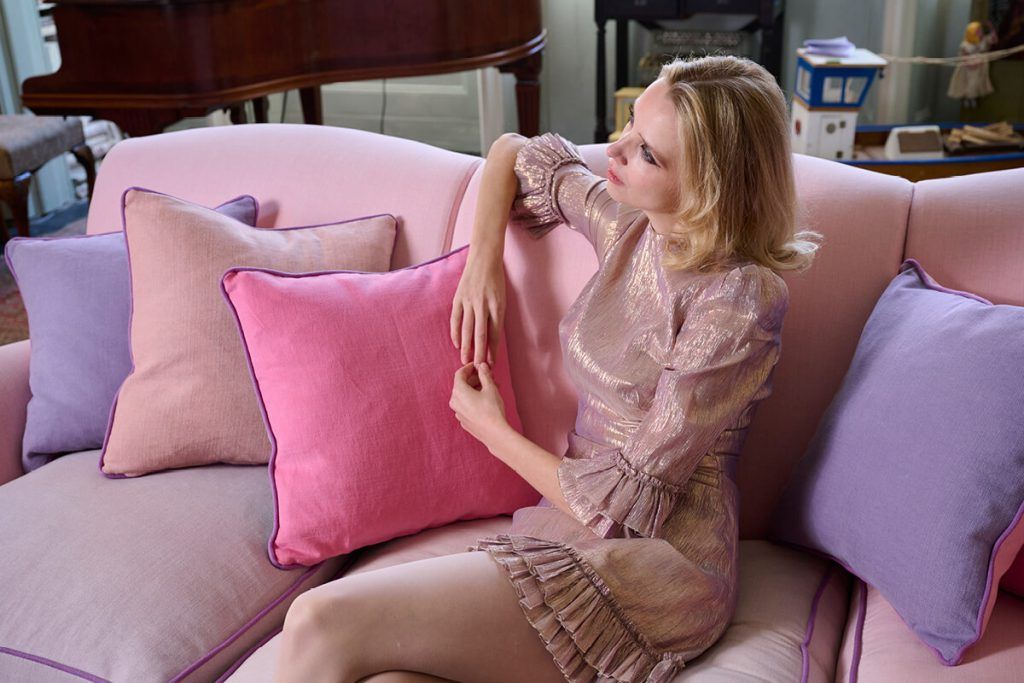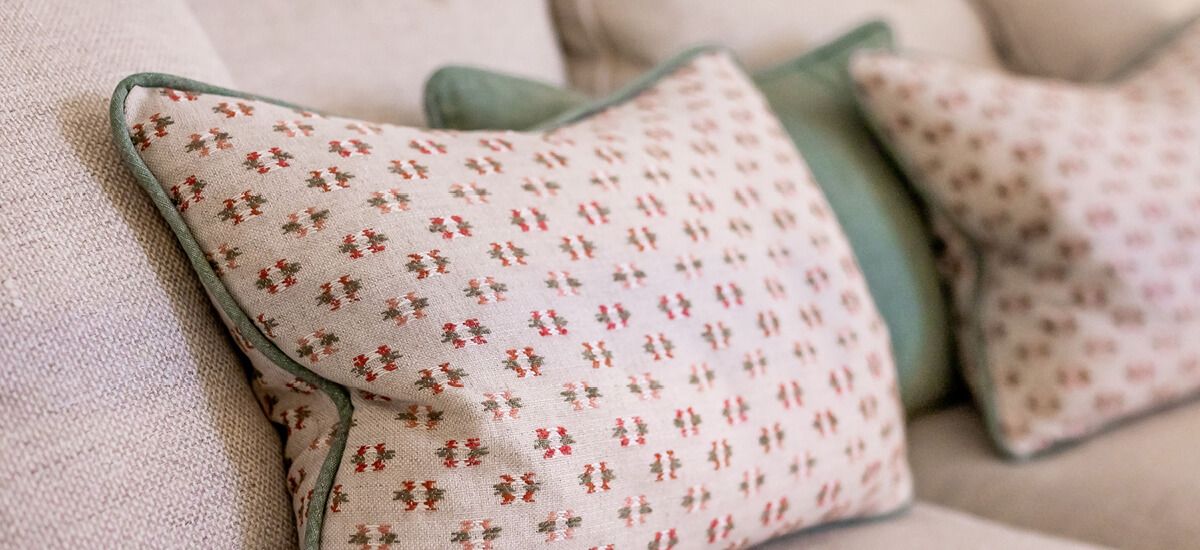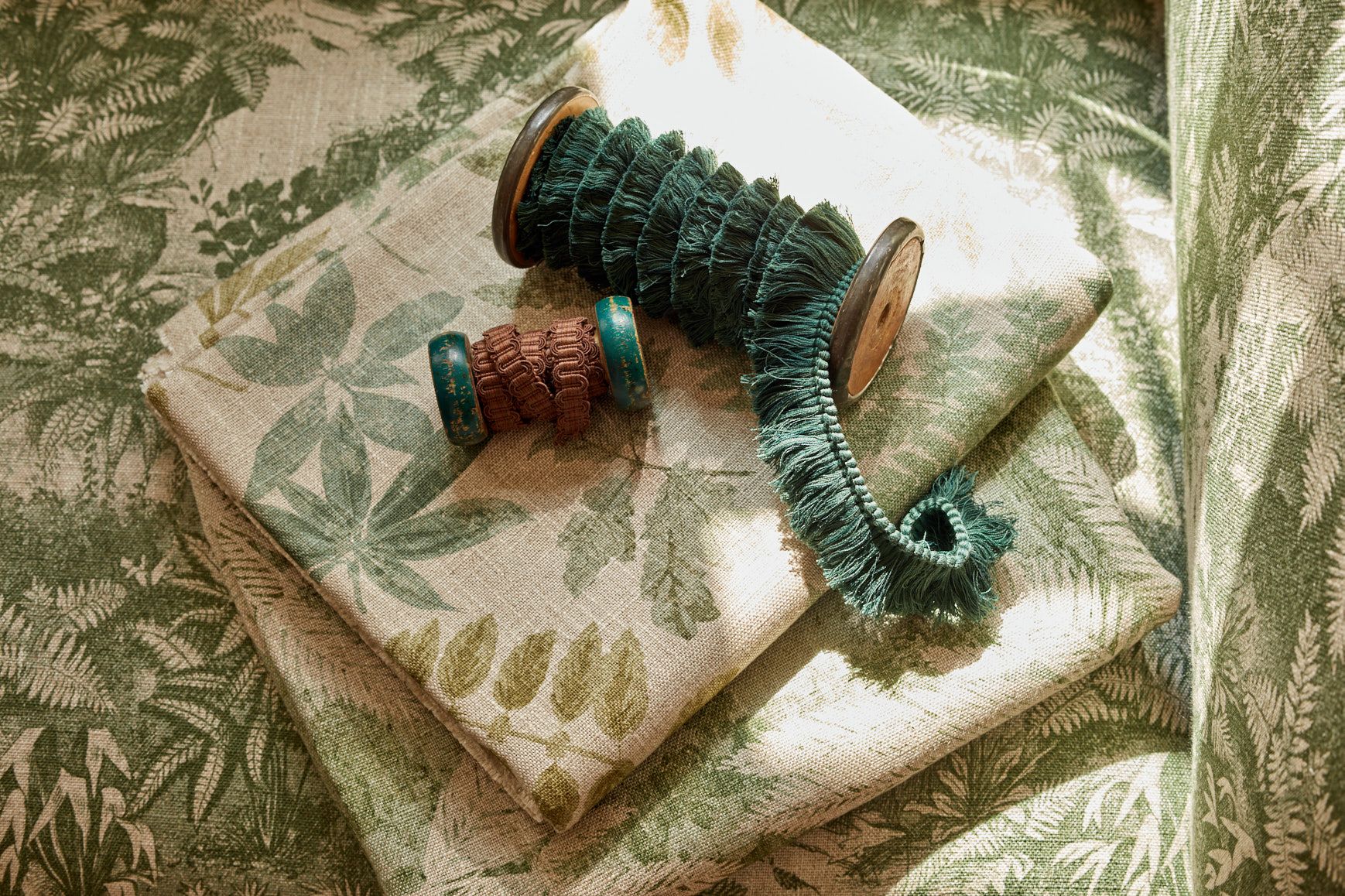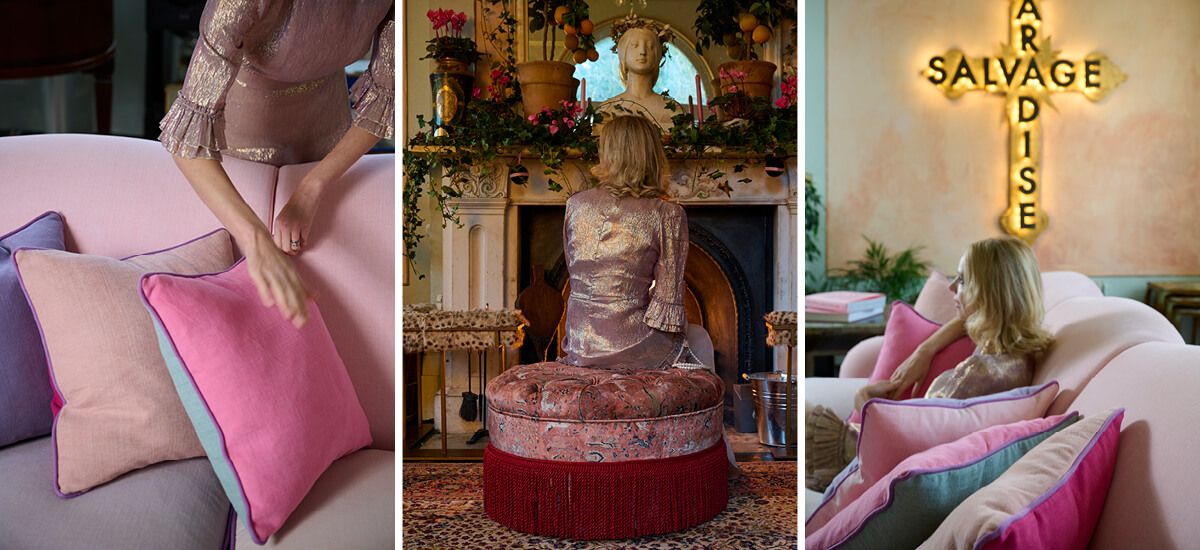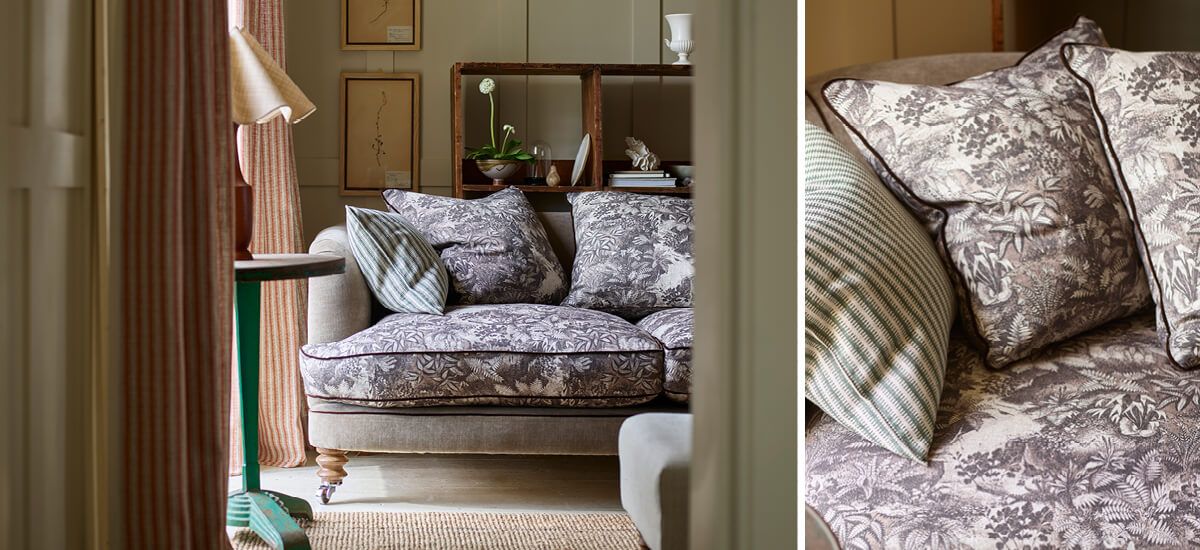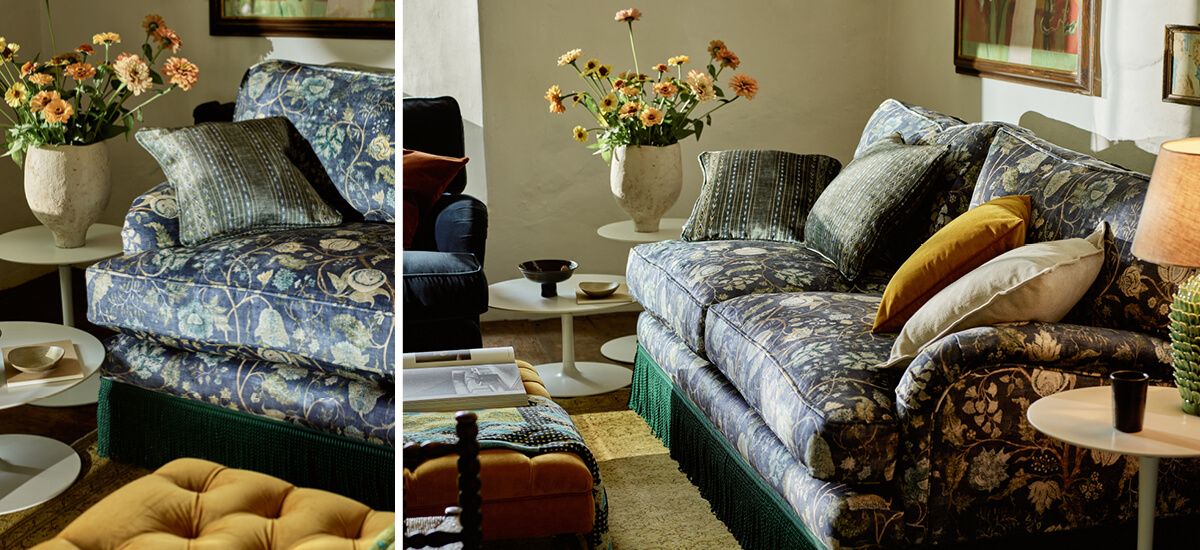Elevating upholstery with bespoke details
Small decorative details can make a big difference in interior design. Trims and piping have the power to transform a simple upholstered piece into something truly unique by adding an extra layer of pattern, colour, and texture to the room.
Marisa Gutmacher, VP of Design at renowned US passementerie design house Samuel & Sons, encapsulates the philosophy behind decorative trims:
“Trimmings have the power to transform the ordinary into the extraordinary. Trim is the final detail that elevates upholstery, adding sophistication with a tailored finish that defines lines and introduces subtle depth. It shapes each piece’s character, accentuating contours without excess – a balance of structure and understated elegance. In my approach, trim serves as an architectural element, creating cohesion and enhancing craftsmanship with a barely-there contrast or texture that enriches the design.”
However, incorporating trim into your designs can be a tricky detail to get right. To help you navigate this, we’ve gathered insights from our design consultants and experts from leading passementerie brands.
Piping: the finishing touch
Piping isn’t just decorative – it’s the element that personalises your furniture. Sewn along the edges of a sofa’s cushions, arms, and backrest, it can either echo the main upholstery or provide a contrasting accent for a tailored, polished finish. It reinforces seams while accentuating the unique lines and structure of each piece.
“Piping is the final detail that elevates upholstery, adding sophistication with a tailored finish that defines lines and introduces subtle depth,” says Marisa Gutmacher.
Incorporating trims: key considerations
Trims come in many forms – from braids and tassels to fringes and decorative cords – and each one creates a different effect. The key is to use them strategically to highlight, define, or bring cohesion to your design without overwhelming it. Here are some core elements to consider:
1. Contrast with colour
Colour can transform a design – and nowhere is this more evident than with contrast piping. When designing a scheme from scratch, start by using a colour wheel to explore complementary colours that will create a striking accent with your upholstery. Alternatively, pick up on key colours already present in the room – whether in furniture, fabrics, artwork, or accessories like lampshades – to ensure the piping ties into the overall scheme.
For a subtler effect, consider pairing your main upholstery with piping in a colour adjacent to its complementary hue, or even a neutral tone.
For example, in our recent Uncommon Threads feature, actress and poet Greta Bellamacina’s bespoke lilac contrast piping on her pastel pink linen sofa beautifully tied together softly varied pinks with pops of deeper pinks, lilac, and greens from her scatter cushions. Contrast piping not only frames a piece but also serves as a visual link, unifying disparate elements within a room by achieving the perfect balance.
2. Bring different textures into play
Pairing different textures can generate visual interest without relying solely on colour. For example, a linen sofa edged with velvet piping creates a subtle yet striking contrast, adding a textural dimension that emphasises comfort and adds a quiet luxury to the design.
Fringing too, can bring textural contrast, and a wonderful sense of movement to a piece of furniture.
“Bullion, skirt, and chainette fringe are making a stylish return, bringing texture and a touch of luxury to upholstered sofas. These fringes add movement, elegance, and personality, effortlessly enhancing the overall design with a modern yet timeless feel” says Marisa Gutmacher.
3. Use pattern thoughtfully
When balancing a scheme featuring varied prints and textures, a well-chosen trim can act as a unifying device. Selecting a piping or fringing colour that echoes a key hue from the featured fabrics creates a cohesive look by reinforcing the interplay of patterns without competing with them. Alternatively, using a patterned trim on a plain fabric can introduce unexpected flair, drawing the eye and creating visual interest.
Final thoughts
Trims and piping offer endless possibilities for customisation. They can lend a traditional, heritage feel or create a strikingly modern look, depending on their application. When used thoughtfully, these details not only enhance the beauty and craftsmanship of a piece but also tie an entire room together – whether through a pop of colour echoed in accessories or through a cohesive interplay of textures and patterns.
At Sofas & Stuff, we believe every detail counts. Our commitment to personalisation and quality ensures that your upholstery is not just custom-made but a true reflection of your unique style. Embrace the art of decorative trims and let your designs speak volumes about your creativity and personality.
Ready to elevate your upholstered furniture? Visit your nearest showroom to explore our fabrics and trims, including those from Samuels and Sons and discover how we can help you create a custom-made, personalised design that’s uniquely yours.

